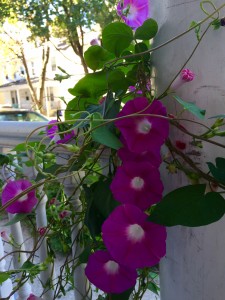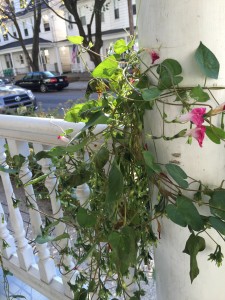There is a pervasive myth in our society that we need certain things to qualify as a civilized member of that society. I don’t necessarily mean fancy cars or big houses, I mean more basic things. In the effort to decrease my output of waste and my regular expenditures, I decided to try to minimize the amount of these “necessities” that I actually need. So, I haven’t used shampoo or conditioner since July 1st.
Daily shampooing didn’t become a societal norm until the 1970’s. Before that, many people didn’t wash their hair more than once a week. This trend increased profits for hair care companies, advertisers for their products, plastic manufacturers who package shampoo and conditioner, and the chemical companies who provide the raw materials. Shampoo doesn’t just clean your hair, it strips your hair of the natural oils that your scalp produces. The glands that secrete that oil are triggered to secrete even more when it senses the oil it has already produced has been removed. This process has caused, for most people, a dependency on shampoo and conditioner because their scalp is overproducing oil which never makes it to the body of one’s hair, rendering it dry and needing of conditioner. That is why most people spend money every few weeks or so to buy these products that they really don’t need.
What I do to keep my hair clean is called the No Poo method. Instead of lathering my hair with shampoo every day, I use a solution of a tablespoon of baking soda to a cup of water every other day to get the dirt out of my hair. Instead of conditioner, I use a table spoon of apple cider vinegar to a cup of water solution every other day. This allows the natural oils to travel down the length of my hair while preventing the glands in my scalp from over-secreting those oils. I also make the solution myself, reusing the squeeze bottle containers over and over again. My expenses are about $2 for the box of baking soda which I’ve only used about a third of since July and Bragg’s Apple Cider Vinegar which is about $3 for a 16oz bottle of which I’ve used less than one third. The water cost is negligible. Just to summarize the benefits: my hair is a soft as it has ever been, I spend a fraction of what I used to on hair care, and I’ve minimized my waste output incredibly.
I’ve told so many people about No Poo (www.nopoomethod.com) and have yet to hear that anyone else is trying it. That truly displays to me how pervasive habit and societal norms can be. Much environmental activism takes place publicly, loudly, and aggressively. However, making a simple change that has so many other benefits also counts as environmental activism! Why don’t more people do this? After looking at the pictures of the birds full of plastic, don’t you want to start getting creative and selective about your plastic use? It also never hurts to spend a little less.
P.S. Skeptical? Come touch my hair.


